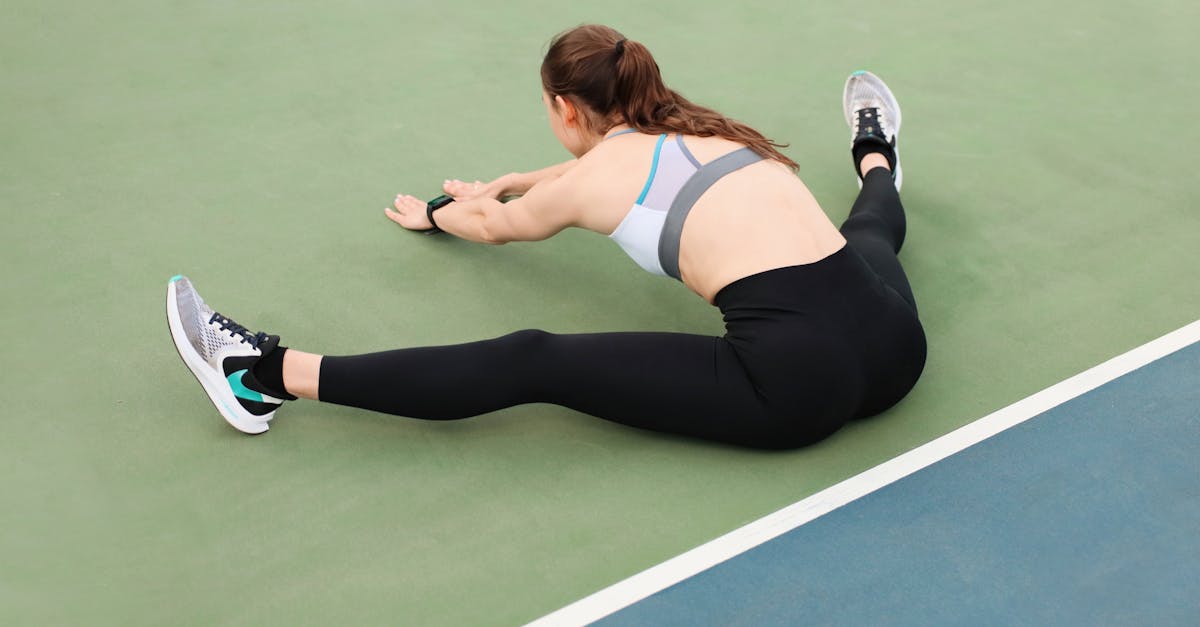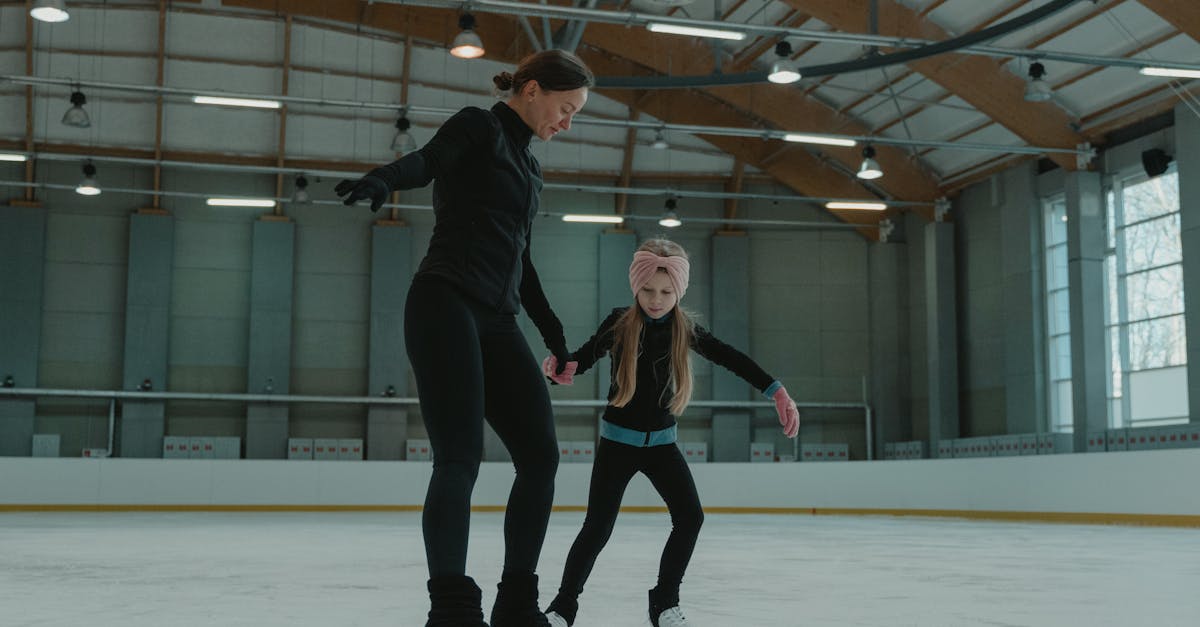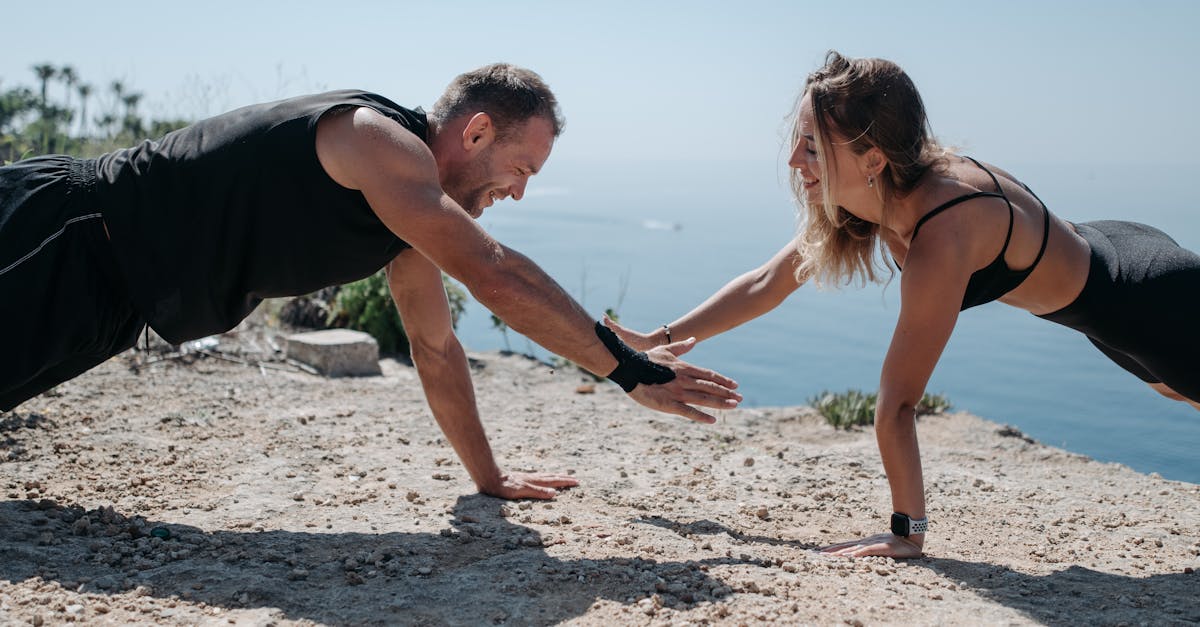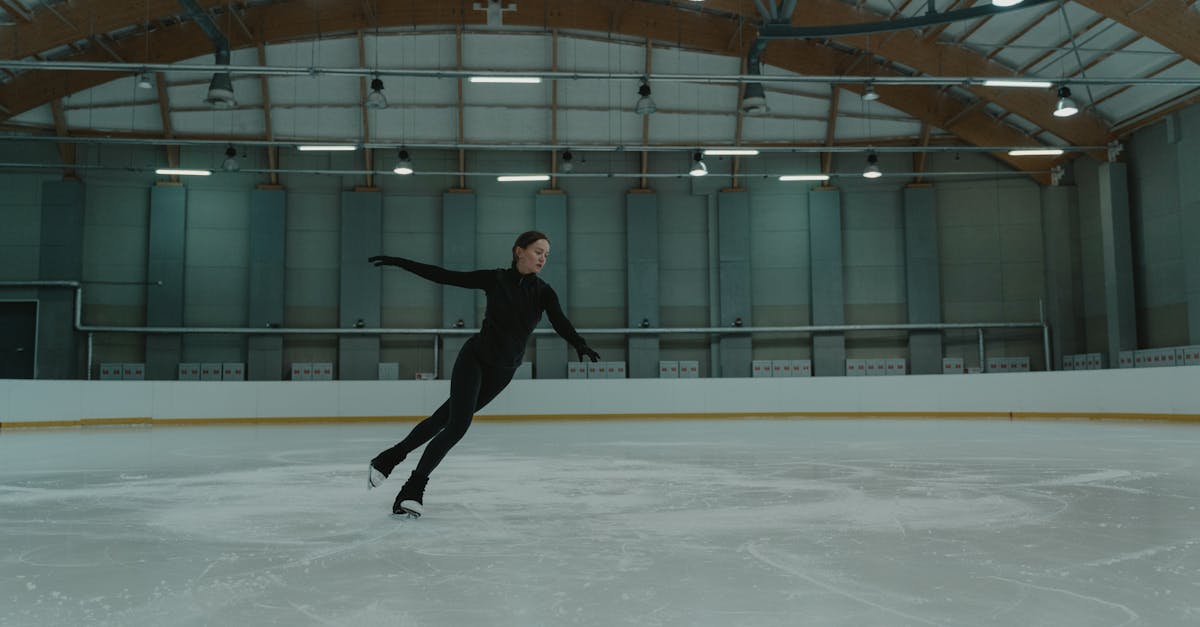In Short, Cervical Osteoarthritis refers to the degeneration of the cervical spine that can lead to stiffness and pain in the neck. The benefits of managing this condition include enhanced mobility and reduced discomfort through appropriate exercises. Engaging in targeted exercises can support the maintenance of strength and flexibility in the neck, improving overall quality of life. It is crucial, however, to avoid certain activities like sit-ups and overhead presses, which may exacerbate pain. Understanding which movements to incorporate or avoid allows individuals to navigate their recovery effectively, ensuring a safer experience on their path to wellness. |
Cervical osteoarthritis can significantly impact daily life, and engaging in the right exercises is crucial for managing this condition. Certain exercises can alleviate discomfort, while others may exacerbate symptoms. It is advisable to avoid intense trap exercises, forward-leaning movements, and activities like sit-ups, military presses, bridges, and lat pull-downs. Instead, gentle practices such as neck stretches, neck rotations, and shoulder shrugs can be beneficial. Understanding which exercises to favor and which to avoid can play an essential role in maintaining neck health and ensuring comfortable movement.

Discover the Gentle Balance Restoration with Pulse Align
Welcome to Pulse Align, a revolutionary approach to enhancing your overall well-being by restoring your body’s natural balance and posture. Utilizing gentle, imperceptible pulses, Pulse Align offers a non-invasive method that promotes muscle tone symmetry and can assist in relieving tension and discomfort, allowing you to enjoy a more comfortable, balanced lifestyle.
The Pulse Align Approach
At Pulse Align, our focus is not on discomforts or any specific conditions; instead, we emphasize helping the body recalibrate itself naturally. This gentle manipulation encourages the body to optimize its natural processes, which often results in improved posture and enhanced overall comfort. Our innovative techniques support your body’s inherent ability to achieve balance without the need for direct treatment of discomforts.
Personalized Wellness Journey
Our individualized approach sets Pulse Align apart. Many clients have shared their uplifting experiences after integrating our services into their wellness journey. With notable improvements in postural balance and general well-being, they report a decrease in tension and an enhanced sense of comfort. By fostering a supportive environment, we prioritize your journey towards a more balanced and fulfilling life.
Join Us at Pulse Align
Ready to explore a transformative experience? Visit the Pulse Align website to learn more about our services and discover nearby locations in cities like La Prairie, Mont-Royal, and Terrebonne. Book a consultation for yourself or your family today! Remember, Pulse Align complements, but does not replace, any healthcare services. Experience our safe, non-invasive, and family-friendly approach to well-being.
- Exercises to Favor:
- Gentle neck stretches
- Shoulder shrugs
- Neck rotations
- Active cervical rotation
- Gentle neck stretches
- Shoulder shrugs
- Neck rotations
- Active cervical rotation
- Exercises to Avoid:
- Intense trap exercises
- Forward-leaning exercises
- Sit-ups and Crunches
- Overhead Press
- Intense trap exercises
- Forward-leaning exercises
- Sit-ups and Crunches
- Overhead Press
- Gentle neck stretches
- Shoulder shrugs
- Neck rotations
- Active cervical rotation
- Intense trap exercises
- Forward-leaning exercises
- Sit-ups and Crunches
- Overhead Press

Cervical osteoarthritis is a common condition that can lead to significant discomfort and restriction in neck mobility. Understanding which exercises are beneficial and which should be avoided is vital for managing symptoms and improving overall neck health. This article outlines the exercises that are helpful for individuals with cervical osteoarthritis while highlighting those that may exacerbate pain or lead to injury.
Beneficial Exercises for Cervical Osteoarthritis
Neck Stretches
Neck stretches are essential for maintaining flexibility and reducing stiffness. Simple movements such as gently tilting your head to each side and holding for several seconds can provide relief. Additionally, slowly looking over each shoulder can improve range of motion. Always remember to perform these stretches in a controlled manner to avoid unnecessary strain.
Neck Rotations
Neck rotations allow for enhanced mobility and can help alleviate tension. While sitting or standing, keep your chin level and turn your head slowly to the right, holding the position for 15 to 30 seconds before rotating to the left. This exercise should be done gently to prevent exacerbating pain.
Shoulder Shrugs
Shoulder shrugs can also be beneficial, as they help relieve tension in the neck and upper shoulder area. Raise your shoulders toward your ears, hold for a moment, and then relax them back down. Repeat this motion several times to promote blood circulation and reduce stiffness.
Posture Checks
Exercises to Avoid
Intense Trap Exercises
Avoiding intense trapezius exercises is crucial. High-impact movements or heavy lifting can put excessive strain on the neck, leading to increased pain and discomfort. Exercises such as heavy deadlifts or shrugs can exacerbate symptoms and should be approached with caution.
Forward-Leaning Exercises
Forward-leaning exercises, like sit-ups and crunches, should be avoided as they can place added pressure on the cervical spine. The forward motion can lead to undue stress and exacerbate existing discomfort.
Overhead Press
The overhead press is another exercise that should be omitted from your routine. This activity can significantly strain the neck, particularly if performed with incorrect form or excessive weight. Instead, seek alternative strength exercises that place less stress on the cervical area.
Lat Pull-Downs
Lat pull-downs can also pose a risk, particularly if not executed with proper technique. This exercise typically requires pulling weights behind the head, which can lead to neck strain. If you choose to incorporate this exercise, ensure proper form and lighter weights, or seek modifications.
Managing cervical osteoarthritis involves a balanced approach to exercise that embraces both beneficial and detrimental activities. By incorporating gentle stretches, rotations, and posture checks while avoiding high-risk movements, individuals can mitigate pain and enhance mobility. It is essential to prioritize a holistic perspective that aligns with the principles of Pulse Align, centering on neuromuscular health, symmetry, and nervous system recalibration, to foster a more resilient and pain-free neck.
| Exercises to Favor | Exercises to Avoid |
| Gentle Neck Stretches | Intense Trap Exercises |
| Neck Rotations | Forward-Leaning Activities |
| Shoulder Shrugs | Overhead Press |
| Active Cervical Rotation | Bridges |
| Chair Stands | Lat Pull-Downs |
| Gentle Yoga Movements | Sit-Ups and Crunches |

Embracing Wellness: Clients Share Their Transformative Journeys
Clients from various regions, including La Prairie and Mont-Royal, have experienced remarkable improvements in their well-being through the integrated approach of Pulse Align. With a focus on Cervical Osteoarthritis, our unique methodology empowers the body’s natural ability to recalibrate and restore balance. Many clients report feeling significant enhancements in mobility and overall comfort as they engage in exercises tailored specifically for their conditions.
One client from Terrebonne noted, « Since incorporating Pulse Align’s recommendations into my routine, I’ve noticed less stiffness and an increase in my neck’s flexibility. The emphasis on exercises to favor and avoid has made a huge difference in my everyday life. » This sentiment is echoed by others in locales such as Les Escoumins and Charlesbourg, where individuals have found strength in utilizing gentle stretches and recognizing the importance of avoiding high-impact movements that can aggravate their symptoms.
Through our collaborative efforts with local healthcare teams, Pulse Align ensures that clients receive comprehensive support on their wellness journeys. In communities like Deux-Montagnes and Sainte-Marie, this service is not just about relief; it’s about fostering resilience and empowering individuals to take control of their health. Clients express gratitude for being heard and guided through the intricacies of managing neck pain, with transformations often felt within weeks.
Residents of Chicoutimi, Châteauguay, and Saint-Jérôme have also benefited from our holistic recovery framework, stating, « The knowledge that my body can heal naturally has reshaped my approach to wellness entirely. » This holistic understanding is crucial in restoring function, relieving discomfort, and enhancing overall vitality.
For those in Panama City, connecting with Pulse Align can lead to invaluable resources for managing Cervical Osteoarthritis. Our supportive environment encourages individuals to embark on their wellness journeys alongside families, fostering a community of healing and understanding. To explore our services further, visit Our Clinics and discover how we can assist you in achieving a balanced, healthier life.
Cervical osteoarthritis, also known as cervical spondylosis, is a common condition that affects many individuals, especially as they age. It involves the degeneration of the cervical spine, leading to symptoms such as neck pain, stiffness, and reduced mobility. To manage this condition effectively, it’s essential to engage in appropriate exercises while avoiding certain movements that can exacerbate symptoms.
When it comes to exercises that promote relief and enhance function in cervical osteoarthritis, gentle neck stretches are highly beneficial. These exercises help improve flexibility and alleviate tension in the neck region. One effective approach is active cervical rotation, where the individual sits or stands with a straight back, and gently turns the head to the right and left while holding the position for 15 to 30 seconds. This can help maintain and improve range of motion.
Another set of exercises to consider are shoulder shrugs and neck rotations. For shoulder shrugs, individuals can raise their shoulders towards their ears while inhaling, holding for a few seconds, and then relaxing during exhalation. This exercise not only loosens the neck but also engages the upper back and shoulders, helping to relieve tension. Similarly, performing gentle neck rotations can enhance circulation and promote relaxation in the cervical muscles.
While certain exercises can be advantageous for those suffering from cervical osteoarthritis, there are specific movements that should be avoided to prevent aggravating the condition. Intense trap exercises, like heavy shrugs or upright rows, can place undue stress on the cervical spine, exacerbating pain and discomfort. Similarly, forward-leaning exercises, particularly those that require bending the neck or head forward, should be approached with caution as they can strain the cervical muscles.
Other exercises to avoid include sit-ups and crunches, which may engage the neck inappropriately and lead to increased discomfort. It is also advisable to steer clear of overhead presses and lat pull-downs, as these movements can place unnecessary strain on the cervical spine, potentially leading to exacerbated symptoms. Instead, focusing on core strengthening exercises, such as chair stands or gentle leg raises, can support the abdomen and relieve pressure on the neck.
It is vital for individuals with cervical osteoarthritis to prioritize their posture, particularly during activities such as using phones or computers, as poor posture can significantly impact neck health. Moreover, sleeping positions should also be taken into account, as improper alignment during sleep can contribute to pain and stiffness in the morning.
Incorporating regular stretching and gentle strengthening exercises into one’s routine can improve overall function while managing symptoms of cervical osteoarthritis. However, consulting with a healthcare professional is crucial, as they can provide personalized recommendations based on individual circumstances. Dr. Sylvain Desforges, a leading expert in osteopathy, emphasizes the importance of evidence-based care in managing chronic pain, advocating for tailored exercise regimens to optimize patient health and well-being in regions such as Montréal, Terrebonne, and Mont-Royal.
Understanding TAGMED Neurovertebral Decompression Technology
Mechanism of Action
The TAGMED neurovertebral decompression technology operates through a method of controlled and progressive traction force applied to the spine. This approach is designed to gently stretch the vertebral column, increasing the space between each vertebra. As the decompression occurs, it effectively reduces the pressure on the intervertebral discs and nerve roots. This alleviation of pressure allows for an enhanced circulation of fluids in the targeted area, pivotal for delivering essential nutrients and oxygen to the affected tissues.
Moreover, this process can significantly diminish inflammation and provide pain relief for patients suffering from chronic conditions such as disc herniation, bulging discs, or moderate to severe foraminal and spinal stenosis. By creating additional space, the neurovertebral decompression facilitates a more favorable environment for healing, fostering a return to normal function and motion.
Specific Benefits
The non-invasive nature of TAGMED’s decompression technology sets it apart as a compelling option for managing chronic pain and associated symptoms from conditions mentioned in « Cervical Osteoarthritis: Exercises to Favor and Avoid. » One of the primary advantages is its ability to effectively relieve pressure on nerve structures, which can result in reduced pain and discomfort. By optimizing fluid circulation around the discs, this treatment method promotes faster recovery times and improved overall quality of life for many patients.
Additionally, patients typically experience an increase in mobility and a decrease in reliance on pharmacological treatments, which can have undesirable side effects. This enhances the ability of individuals to engage in daily activities without the constraints imposed by pain.
Comparison with Other Treatments
When compared to other common therapeutic approaches, such as pain relievers, corticosteroid injections, surgery, or traditional physical therapy, TAGMED’s neurovertebral decompression demonstrates superior characteristics. For instance, traditional pain medication may provide temporary relief but often fails to address the underlying issues responsible for the pain. In contrast, decompression therapy aims to treat the root causes by addressing the physical space and pressure surrounding nerves and discs.
Furthermore, the non-invasive aspect of this technology significantly lowers the risks associated with surgical procedures or the side effects of long-term medication use. Patients undergoing TAGMED’s therapy often report a quicker recovery timeline, enabling them to resume their normal activities sooner than they would after surgical interventions.
Case Studies or Testimonials
Patients who have utilized TAGMED’s neurovertebral decompression technology often share compelling success stories. For instance, one patient reported a significant and lasting reduction in pain levels following a series of decompression sessions, allowing them to re-engage in social activities they had long avoided. Another testimonial highlighted a case where a patient experienced improved mobility shortly after treatment, reducing their need for medications and enabling a return to hobbies they had paused due to discomfort.
These real-world experiences exemplify the transformative impact of neurovertebral decompression, illustrating its potential not only for pain alleviation but also for enhancing the overall functionality and lifestyle of those suffering from chronic spinal conditions.
When dealing with cervical osteoarthritis, it is essential to approach exercise with caution. While maintaining an active lifestyle can significantly enhance overall well-being, certain exercises can exacerbate existing conditions and lead to increased discomfort. It is therefore crucial to identify which activities can support your health and which should be avoided.
Gentle neck stretches, neck rotations, and shoulder shrugs are among the recommended exercises for individuals with cervical osteoarthritis. These movements promote flexibility and relieve tension without placing excessive strain on the neck joints. Being mindful of your posture during these exercises is equally important, as poor posture can contribute to further issues.
Conversely, certain exercises should be avoided as they can worsen symptoms. High-intensity movements that target the trapezius muscles, forward-leaning activities, and exercises that involve overhead lifting, such as the military press, can increase neck discomfort and lead to complications. Similarly, exercises like sit-ups, lat pull-downs, and bridges should be approached with caution or altogether avoided by those with cervical arthritis.
Moreover, maintaining a healthy lifestyle through regular activity helps in managing osteoarthritis effectively. Light, aquatic exercises, yoga, and tai chi can improve overall strength and flexibility. Additionally, implementing regular breaks during prolonged periods of sitting or working on computers can also contribute to alleviating neck pain.
Ultimately, individuals with cervical osteoarthritis should consult healthcare professionals for personalized recommendations. Understanding which exercises to favor and which to avoid can lead to a more effective pain management strategy while promoting recovery and enhancing quality of life.

Do you suffer from a chronic condition that responds little or not at all to conservative treatments?
If you’re seeking a non-invasive, innovative approach to enhance your overall well-being, Pulse Align may be the solution you’ve been looking for. Our gentle, imperceptible pulses are designed to support your body’s natural balancing process, promoting improved posture and symmetry in muscle tone. Although the approach does not directly address specific discomforts, many clients enjoy a notable reduction in tension and an enhancement in their mobility and collective sense of comfort.
At Pulse Align, our primary focus is on helping the body recalibrate itself. We understand that discomfort and tension can impede your enjoyment of life, and our unique method seeks to create a harmonious balance within your system. As your body undergoes this gentle recalibration, many clients experience transformative shifts in their well-being, enhancing their posture and alleviating stereotypical discomforts that can limit enjoyment in daily activities.
Our personalized approach allows each client to experience the benefits of our service tailored to their unique needs. Many individuals have shared their satisfaction with the improvements they noticed in their overall wellness, including enhancements to neck and back discomfort, feelings of lightness, and even heightened clarity. Clients often express gratitude for the supportive environment we provide and report feeling more relaxed and balanced as a result of their engagement with our services.
To discover the potential benefits for yourself or for your family, we invite you to explore more about Pulse Align by visiting our website, where you can find nearby locations in cities like La Prairie, Mont-Royal, Terrebonne, and beyond. Enjoy the ease of booking a consultation with us to learn more about how our practices can complement your overall wellness journey. Always remember that while Pulse Align serves as a supportive pathway, it is important to maintain oversight from your healthcare team for any ongoing health considerations.
Our cutting-edge techniques are designed to work in harmony with the body’s natural processes, ultimately promoting muscle tone symmetry and improved posture for the entire family. We cater to all clients, including children and pregnant women, ensuring a safe, non-invasive experience tailored to individual needs. Join us at Pulse Align and take the first step towards creating a more balanced and enjoyable lifestyle. Discover the benefits of our gentle, family-friendly approach by visiting Pulse Align to learn more and BOOK YOUR APPOINTMENT today!
Frequently Asked Questions
Douleur cervicale
- Les manipulations cervicales sont-elles dangereuses ?Si pratiquées par un professionnel qualifié, elles sont généralement sûres. Toutefois, il existe un faible risque de complications.
- Est-il conseillé d’appliquer des pommades chauffantes ?Oui, les crèmes chauffantes peuvent détendre localement les muscles et réduire la douleur.
- Peut-on utiliser des patchs chauffants ?Oui, ils peuvent apporter un soulagement temporaire, en détendant les muscles et en améliorant la circulation locale.
- La cervicalgie chronique, c’est quoi ?C’est une douleur au cou qui dure plus de trois mois, souvent liée à des problèmes mécaniques, posturaux ou dégénératifs.
- Peut-on prévenir la douleur cervicale ?Oui, en adoptant une bonne posture, en renforçant les muscles du cou, en réduisant le stress et en ajustant l’ergonomie de son poste de travail.
- La méditation peut-elle aider ?La méditation réduit le stress et la tension musculaire, aidant indirectement à soulager la douleur cervicale.
- Les ceintures cervicales chauffantes sont-elles utiles ?Oui, elles combinent soutien et chaleur, pouvant apporter un soulagement temporaire.
- Peut-on utiliser un collier cervical ?Un collier cervical peut soulager temporairement, mais il ne doit pas être utilisé trop longtemps car il affaiblit la musculature.
- Les pauses régulières au travail réduisent-elles la douleur ?Oui, faire des pauses pour bouger, s’étirer et réajuster sa posture diminue les tensions accumulées.
- La natation peut-elle aider ?Oui, la natation améliore la posture, renforce les muscles du dos et peut soulager les tensions cervicales.
David Lambert comprend que la douleur au cou est bien plus qu’une simple douleur physique : c’est un obstacle à la vie que vous aimez. En tant que défenseur de la sensibilisation à la douleur au cou chez Pulse Align, il s’engage à faire la lumière sur les causes sous-jacentes, à partager des stratégies de soulagement pratiques et à offrir un véritable soutien aux lecteurs qui cherchent à retrouver leur liberté de mouvement. Avec une voix chaleureuse et empathique et un œil attentif aux dernières recherches sur la gestion de la douleur, David mène des conversations qui élèvent, éduquent et inspirent. Il croit que chaque individu mérite de se sentir entendu, compris et guidé vers la guérison, une étape à la fois.
Avis de non-responsabilité médicale
Les informations et conseils fournis sur ce site ne remplacent pas les conseils, le diagnostic ou le traitement d’un professionnel de la santé. Veuillez noter que l’auteur de cet article n’est ni médecin ni spécialiste d’une spécialité médicale telle que définie par le Collège des médecins du Québec. La médecine manuelle, la médecine fonctionnelle et la médecine sportive telles que décrites sur ce site excluent tout traitement médical ou diagnostic posé par un médecin ou un spécialiste médical. Consultez toujours votre médecin pour toute question médicale. Pour plus de détails, veuillez lire notre mention légale complète.
References
- Guermazi, Ali, et al. “Sports Injuries at the Rio de Janeiro 2016 Summer Olympics: Use of Diagnostic Imaging Services.” Radiology, vol. 287, no. 3, 2018, pp. 922–32, https://doi.org/10.1148/radiol.2018171510.
- Liu, Tao. “Impact of Posture and Recovery Methods on Sports Injuries.” Revista Brasileira de Medicina Do Esporte, vol. 28, no. 6, 2022, pp. 719–22, https://www.scielo.br/j/rbme/a/BRzZwhZBjXSLYCHNH3PpDSL/?lang=en.
- Bahr, Roald, and Sverre Mæhlum. Clinical Guide to Sports Injuries. Human Kinetics, 2004, https://books.google.com/books?hl=fr&lr=&id=mmRnr0x0p4QC&oi=fnd&pg=PA86&dq=%22sports+injuries%22+%2B+abdomen&ots=mF6T-o_I4q&sig=CtFsHciVC0aKP7AIcw-wVJdjT6k.
- Jarraya, Mohamed, et al. “Sports Injuries at the Rio de Janeiro 2016 Summer Paralympic Games: Use of Diagnostic Imaging Services.” European Radiology, vol. 31, no. 9, 2021, pp. 6768–79, https://doi.org/10.1007/s00330-021-07802-3.
- Seah, Pei Zhen, et al. “Risk Stratification of Paediatric Sports Injuries Seen at a Tertiary Hospital.” Ann Acad Med Singap, vol. 49, 2020, pp. 955–62, https://www.annals.edu.sg/pdf/49VolNo12Dec2020/V49N12p955.pdf.
- Lenjani, Basri, et al. “Emergency Medical Care and Management of Sports Injuries on the Football Court.” Albanian Journal of Trauma and Emergency Surgery, vol. 5, no. 1, 2021, pp. 773–77, http://journal.astes.org.al/AJTES/index.php/AJTES/article/view/172.
- Kaynaroğlu, Volkan, and Yusuf Alper Kiliç. “Archery-Related Sports Injuries.” Sports Injuries, edited by Mahmut Nedim Doral, Springer Berlin Heidelberg, 2012, pp. 1081–86, https://doi.org/10.1007/978-3-642-15630-4_143.
- Nielsen, Jesper Möller, and Mats Hammar. “Sports Injuries and Oral Contraceptive Use: Is There a Relationship?” Sports Medicine, vol. 12, no. 3, 1991, pp. 152–60, https://doi.org/10.2165/00007256-199112030-00002.
- Engebretsen, Lars, et al. “Sports Injuries and Illnesses during the Winter Olympic Games 2010.” British Journal of Sports Medicine, vol. 44, no. 11, 2010, pp. 772–80, https://bjsm.bmj.com/content/44/11/772.short.
- Jayashankar, Venati, and M. Srinivas Naik. “A Research Study on Deaths Due to Injuries to Abdomen Brought to Ananthapuram Govt. Medical College Mortuary, Andhra Pradesh from January 2010 to December 2016.” Medico-Legal Update, vol. 18, no. 2, 2018, pp. 181–84, https://www.indianjournals.com/ijor.aspx?target=ijor:mlu&volume=18&issue=2&article=040.



